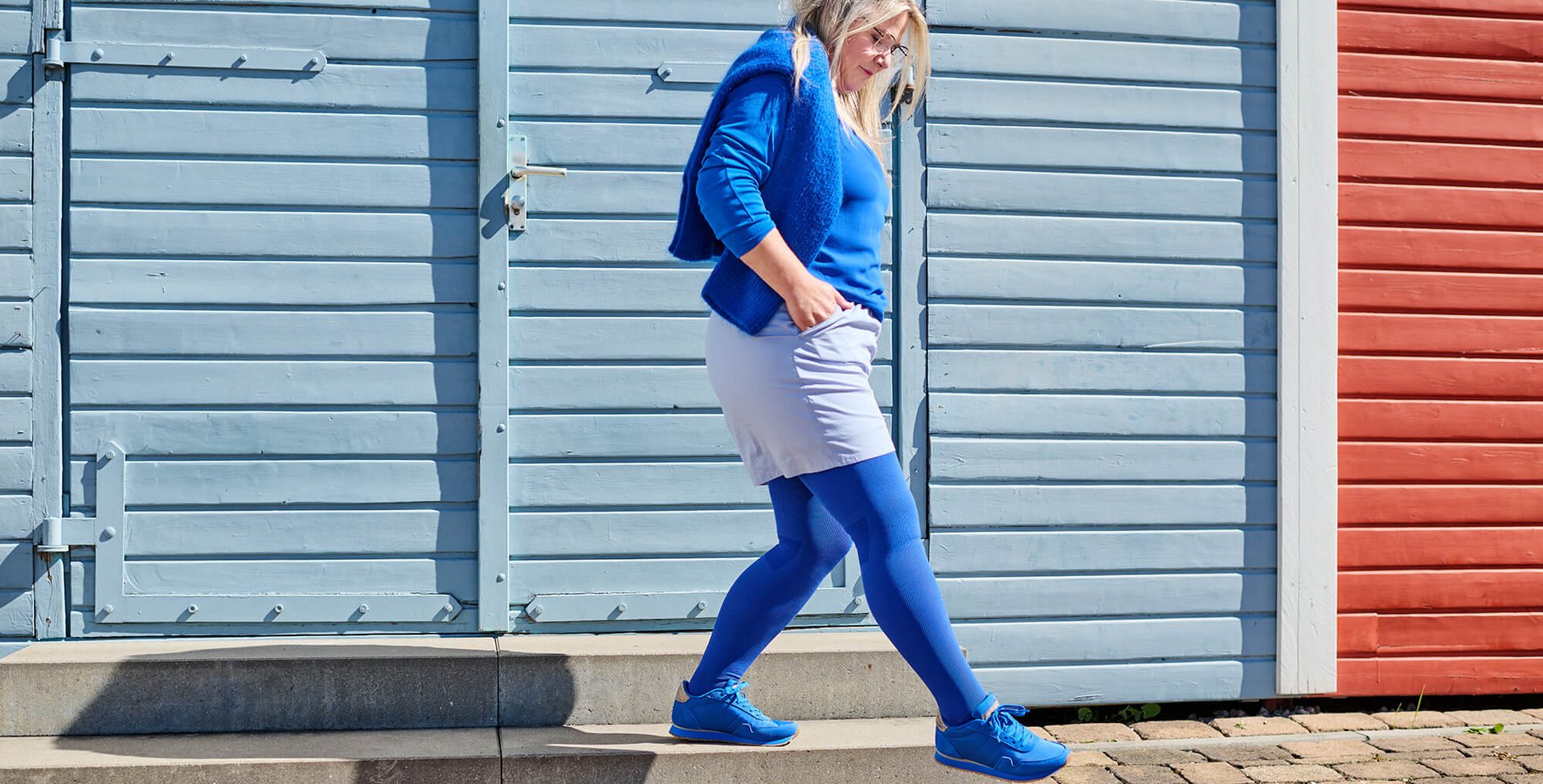
Swollen feet: looking for causes
How lymphedema is diagnosed and what to bear in mind for your medical consultation
Peter Nolte is a lymphologist who supports about 100 new patients per year in his specialist practice. Mostly women come to see him – sometimes also men or even children – who have been suffering from heavy legs or swollen feet for many years, without an official lymphedema diagnosis by a physician. We talked to Peter Nolte to find out why lymphedema is often recognized late, and which treatment approach promises the most success.
Swollen legs and feet: finding the root causes

Editor: Swollen legs and feet, combined with pressure-sensitive skin, are an indication of a serious condition. Nevertheless, those affected are frequently brushed off as overweight. Why does lymphedema often remain unrecognized for a long time?
Peter Nolte: There is a lot of time pressure on most practices. A lot of physicians can therefore not look for actual causes. I also notice, however, that many physicians don’t know enough about this condition. They don’t ask: “Why does she have swollen feet?”, but treatment is prescribed too quickly instead. Frequently, the assumption is that patients are suffering from heart or kidney failure, so diuretic treatment is started. Yet this is totally the wrong approach!
Editor: If edema in the legs has not been recognized for a long time: what journey have patients often been through before they come to see you?
Peter Nolte: Many of them, sadly, have undergone lots of diets. “You have big legs? Then you need to lose weight” is often the first response. A prejudgment that is made very frequently. Usually, those affected have been to see ten to twenty physicians before they come to me.
The basics:
The lymphatic system explained in brief
Every day, your body produces about two to three liters of lymphatic fluid, also known as lymph. Its task is to clean the tissue between the cells and to remove fluid.
Your body’s metabolic processes, but also external factors, cause waste products such as cell debris, proteins, and bacterial residue to develop. The problem is that this often happens in the tissue, away from the veins, so the removal has to take place in a different way. This is where the lymphatic system comes into play. The lymphatic capillaries, which start everywhere in the body as one-way systems, take up waste products and transport them to the larger lymphatic vessels via the lymphatic fluid. With the help of white blood cells, the body’s own antibodies, and fully developed immune cells, the lymph is then cleaned in the lymph nodes. The cleaned lymphatic fluid eventually flows into venous angles and therefore back into the bloodstream.
You could say: your lymphatic system is your body’s own 100% organic detox and filtration system.
Lymphedema diagnosed by a specialist
Editor: After all that, what makes patients even want to consult another physician, i.e. you?
Peter Nolte: Their discomfort keeps getting worse. Pain and immobility increase. Dents in the skin and a permanent feeling of tension in the legs are also irritating. It can be so bad that those affected are house-bound. And, of course, they have done their research online in the meantime and suspect that they may be suffering from lymphedema.
Lymphedema: congestion in your body
Lymphedema is a lymphatic drainage disorder that results in the lymphatic fluid pooling in the tissue. The consequence is intense swelling in the affected body part. If left untreated, lymphedema will continue to progress. At some point, the tissue will become hardened, the skin will be taut, and those affected will be severely restricted in their mobility. In addition, the risk of infection will rise. It is therefore crucial to treat the impaired lymphatic drainage. Lymphedema can develop anywhere in the body, though it is most common in the arms and legs.
Show more
Editor: And what happens next?
Peter Nolte: I grasp the condition – in the true sense of the word: I palpate the lymphedema. All those affected should pay attention to that. In order to make a reliable diagnosis, physicians need to examine the entire body for edemas. That's important. After that, I ask my patients what they want. A lot of them want lymphatic drainage – perhaps because they have seen this option many times online, even though lymphatic drainage merely supports the transport of lymphatic fluid. It is not a kind of therapy. Plus, it’s of no use without subsequent compression.

Lymphatic drainage alone does not constitute therapy. Plus, it’s of no use without subsequent compression.
Peter Nolte
Physician for General Medicine/Lymphology
Lymphedema treatment: the five pillars of CDT
Editor: If lymphatic drainage alone doesn’t help, what do you suggest?
Peter Nolte: The most effective treatment is complex decongestive therapy with its five pillars: compression, lymphatic drainage, self-management, exercise and skin care. Compression is the most important element, because the condition is mechanical in a way. When lymph accumulates in the tissue, permanent external pressure helps to drain it more effectively, rather than drainage or tablets. At least as important as compression is a high level of commitment by those affected.
Editor: Why is that?
Peter Nolte: Because they have to maintain this treatment for the rest of their lives. Otherwise, edemas in feet, hands, arms or legs will return. Only patients who are disciplined and incorporate treatment into their everyday lives will have less pain and slimmer arms or legs. For this, patients need perseverance and, first and foremost, the firm resolve for really wanting to change something in their lives.

Editor: That sounds like a real challenge.
Peter Nolte: It is. But the effort will pay off: initial success will usually be evident after four weeks of intense treatment. The first thing is for the pain to go – and that’s something, isn’t it!
Editor: If your patients ever lack optimism, how do you motivate them?
Peter Nolte: In the beginning, I make a treatment agreement with each of them, and we define a treatment goal. Some of them would love to wear knee-high boots again, for example. Then we note as a goal: I want my legs to be slim enough so I can wear boots. And the best thing is when patients come into my office at some stage, wearing boots, and they tell me: “Look, I did it!“
ARE YOU UNSURE WHETHER YOU HAVE EDEMA?
Our self-test will provide some guidance.
Notes for physicians:
The Westphalia‑Lippe Chamber of Physicians and Lymphologic – Medizinische Weiterbildungs GmbH in Aschaffenburg are offering training courses in lymphology.